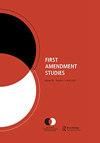一种特殊的“权利”:最高法院对学术自由的肯定
Q2 Social Sciences
引用次数: 0
摘要
围绕学术界内外言论自由权的争论,可以追溯到美国学院和大学成立之初。至少在某些情况下,当一个人选择与一所高等学府交往时,他或她就放弃了言论自由的权利。几十年来,这对一些人来说是一个相当没有争议的立场。但也有人认为,限制教授的言论自由最符合他们所代表的院校和他们所影响的学生的利益。在第一次世界大战期间和之后的几年里,美国各地实施了特别严厉的规定,以确保对战争抱有敌意和/或同情敌人的学者无法进入讲坛,无法向敬仰他们的易受影响的年轻男女灌输思想。在那个时期,主流媒体经常讨论言论自由和学术自由之间的关系,但法律界,尤其是美国最高法院,对这种紧张关系的关注很少;在第二次世界大战后的红色恐慌期间,这种冷漠改变了。20世纪中期的红色恐慌和麦卡锡主义有着漫长而复杂的法律史。为了遏制共产主义浪潮,政府通过了多项立法,其中一些还受到宪法支持。众议院非美活动委员会测试了立法部门的界限以及第五修正案的含义。《权利法案》的基础——言论自由,在州和联邦层面上经受住了一次又一次的挑战。学术自由是这一新的法律格局的积极参与者。为了把共产主义者从高等教育中赶出去而制定的各种法律和誓言往往侵犯了学院和大学教师的权利。因此,最高法院被迫解决学术自由在美国法律领域的地位问题只是时间问题。本文章由计算机程序翻译,如有差异,请以英文原文为准。
A Special Kind of “Right”: The Supreme Court’s Affirmation of Academic Freedom
Debates surrounding the free speech rights of academics both inside and outside the classroom date back to the introduction of colleges and universities in the United States. That one gives up his or her right to free speech, at least in certain cases, when he or she chooses to associate with an institution of higher learning was, for a number of decades, a fairly uncontroversial stance for some. Others, however, believed that limiting the free expression of the professoriate was in the best interest of the institutions they represented and the students they influenced. During World War I and the years following, particularly draconian rules were implemented across the United States to assure that academics hostile to the war effort and/or sympathetic toward the enemy would not have access to a pulpit from which to indoctrinate the impressionable young men and women who looked up to them. The relationship between free speech and academic freedom was discussed with some regularity in the mainstream media during that time period but the legal community, especially the highest court in the land, paid sparse attention to that tense relationship; that disinterest changed during the Red Scare following World War II. The Red Scare and McCarthyism of the mid-1900s have a lengthy and complicated legal history. Multiple pieces of legislation were passed to stem the tide of communism, some with suspect constitutional support. The House Un-American Activities Committee tested the limits of the legislative branch along with the meaning of the Fifth Amendment. Free speech, the foundation of the Bill of Rights, stared down challenge after challenge on both the state and federal level. Academic freedom was an active participant in this new legal landscape. The various laws and oaths put in place to wrestle communists from higher education often infringed upon the rights of college and university faculty. For that reason, it was only a matter of time before the Supreme Court was forced to address academic freedom’s place in the American legal landscape.
求助全文
通过发布文献求助,成功后即可免费获取论文全文。
去求助
来源期刊

First Amendment Studies
Social Sciences-Law
自引率
0.00%
发文量
0
期刊介绍:
First Amendment Studies publishes original scholarship on all aspects of free speech and embraces the full range of critical, historical, empirical, and descriptive methodologies. First Amendment Studies welcomes scholarship addressing areas including but not limited to: • doctrinal analysis of international and national free speech law and legislation • rhetorical analysis of cases and judicial rhetoric • theoretical and cultural issues related to free speech • the role of free speech in a wide variety of contexts (e.g., organizations, popular culture, traditional and new media).
 求助内容:
求助内容: 应助结果提醒方式:
应助结果提醒方式:


